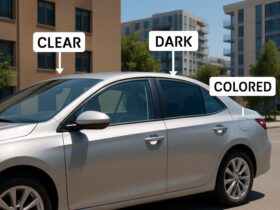
Have you ever picked something off a shelf just because it looked cool? Maybe a bottle with a shiny label or a snack in a fun-looking bag? That wasn’t an accident. Companies spend a lot of time (and money) making sure their products stand out—and it all starts with the packaging. Whether it’s a soda can, a video game case, or a bar of chocolate, how a product looks can be the reason someone buys it or just walks past.
Packaging isn’t just about wrapping things up. It tells a story, makes a first impression, and can even help a product seem more trustworthy. In some cases, a label or box is more important than the product inside—especially the first time someone sees it.
The First Thing People Notice
Think about walking into a store. There are rows and rows of bottles, bags, and boxes. Shoppers don’t have time to stop and read every single one. So what grabs attention first? The look. That’s where smart packaging makes all the difference.
For example, wine bottles might all have the same shape and size, but their labels are a big deal. A clean, classy label can make a bottle feel expensive. A colorful, fun design can make it seem more casual or exciting. Even the texture of the label matters. Some companies use raised ink or foil details to feel fancier.
A great example of this is how wineries choose their wine bottles labels. These labels aren’t just for looks—they give the wine personality. A label might hint at a bold taste, a soft flavor, or even a story about where the wine came from. That little sticker does a lot of work.
Trust Comes in a Box (or Bottle)
When people see a product for the first time, they often make decisions in seconds. The packaging can help answer a few important questions really fast:
- Is this a quality product?
- Does it seem safe and clean?
- Was care put into making it?
If the package looks messy, people might think the product inside is too. On the other hand, something well-designed with clear writing and a strong logo feels more reliable.
Brands use certain colors and designs to show what they’re all about. Blue can feel calm and trustworthy. Red feels bold and exciting. Green might say, “Hey, this is healthy or eco-friendly.” Even the font (the style of the letters) sends signals. A handwritten-looking font might feel cozy and homemade. A sharp, bold font could feel strong or high-tech.
The Unboxing Feeling
There’s something oddly satisfying about opening a new purchase. Whether it’s a smartphone, sneakers, or even a gourmet snack, the thrill isn’t just about what’s inside—it’s about the entire experience. That’s why companies put a lot of thought into what’s now called the “unboxing moment.”
Social media has made this even more of a big deal. People love sharing videos of themselves opening packages. If the box looks stylish, clever, or just plain cool, that’s a major win for the brand. Thoughtful packaging turns a regular delivery into a shareable moment.
Many brands even include little surprises—like a handwritten thank-you note, a sticker, or a fun pattern inside the box. These details don’t cost much, but they can make the experience feel more personal and memorable.
Packaging with a Purpose
Of course, packaging isn’t just about looks. It has an important job: keeping the product safe and clearly presenting key information. That includes things like ingredients, safety warnings, or usage instructions. But great packaging manages to do all that while still looking clean and easy to understand.
Take a protein bar, for example. It needs to show nutrition facts, expiration dates, and allergy info. But if all that data is crammed into a messy design, people might skip it altogether. Smart layout and clear design make a huge difference in how appealing and trustworthy a product feels.
In a busy store aisle, shoppers make snap decisions. When two similar products are side by side, it’s often the better-looking packaging that seals the deal—even if it costs a bit more.
When Packaging Tells a Story
Some packaging goes beyond the basics and actually tells a story. It might hint at where the product was made, who made it, or what inspired it. That storytelling aspect really resonates with people—especially when it comes to things like artisan goods, coffee, chocolate, or wine.
A label that reads “Crafted in small batches using local ingredients” feels personal. It adds a human touch that helps the product stand out. People connect with stories like that—it makes the item feel more than just a commodity.
Some brands go even further by creating mascots or signature icons that show up across all their packaging. Over time, these become recognizable and build trust. When customers see that familiar symbol, they know exactly what kind of experience to expect.
Eco-Friendly Packaging Is the Future
Lately, there’s been a big push toward packaging that’s better for the environment. More people care about recycling, cutting back on plastic, and using renewable materials. Companies are catching on.
This doesn’t just mean brown paper and green leaves. Eco-friendly packaging still needs to look good. In fact, making something look natural and sustainable has become a design style on its own. People notice things like compostable bags or simple, no-waste wrapping. It shows the brand cares.
And if the eco-friendly message is honest, it builds major trust with customers.
What It All Comes Down To
At the end of the day, packaging is more than just a cover. It’s the handshake between a brand and a person. It can turn something ordinary into something exciting. It helps people feel confident about what they’re buying—even if they’ve never tried it before.
A product with smart, good-looking packaging has a better shot at getting picked, shared, and remembered. The design doesn’t need to be fancy—it just needs to feel right. When it does, everything clicks.
Think Before You Buy
Next time you’re shopping, take a second and look at what you’re drawn to first. Is it the colors? The label? The texture of the box? Most likely, the packaging did its job.
And if you’re someone working on a product or even dreaming up a brand one day, remember this: looks really do matter. The way a product shows up in the world can be the difference between flying off the shelves or collecting dust.
What you see on the outside can completely change what you think is on the inside. That’s the power of packaging.





